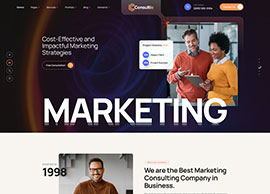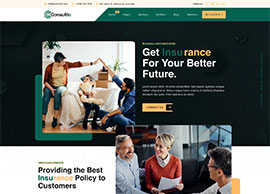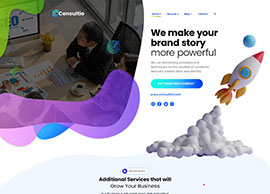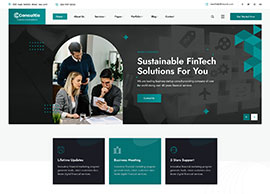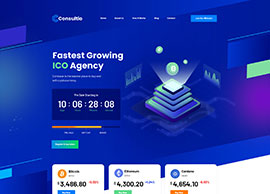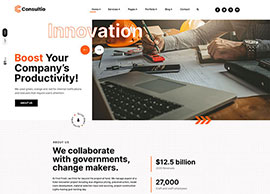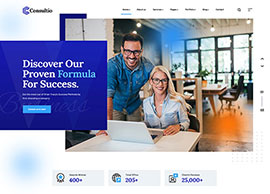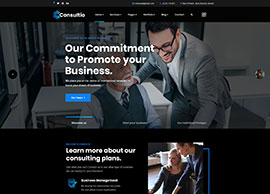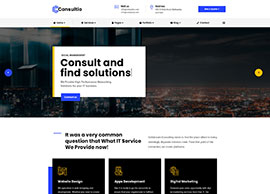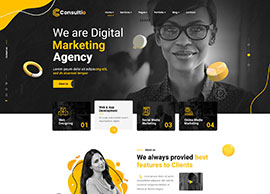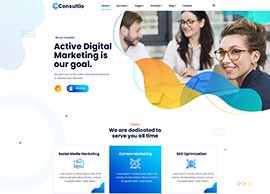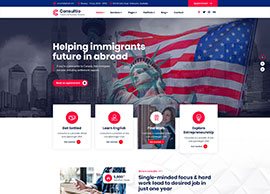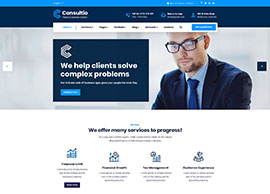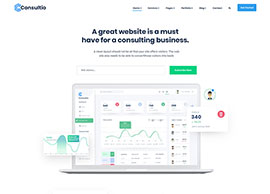I was asked by the USPS to do a presentation at National PCC day in October on how to increase the value of mail. My first thought was that I would just talk about all of the main mail initiatives, but that did not seem to be getting to the root of the problem. The mail industry has been beaten down in the past few years and the last thing anyone needed to listen to was me being a cheerleader.
I believe that one of the main problems is that there is a disconnect between the people in the mail industry, and those making the biggest decisions around mail. Do our marketing departments know all of the newest mail trends for getting higher response rates or are they only hearing about email marketing and social media. Are people in finance informed about how mail can be tracked with intelligent mail barcodes to know when their invoices are delivered and when payments are being returned, or are all they thinking about is converting to electronic statements? If we want to keep mail alive, it is our job to educate our organizations on what is available and integrate mail into a broader strategy that aligns with our organizations goals.
If we want to save the value of mail, we need to provide more benefits and do so at a reduced cost. Here is how we can accomplish this:
- Embrace Technology and Change
- Find Cost Savings and Efficiencies
- Educate and Advocate
Embrace Technology and Change
People are going to move more communications to digital, but how can we integrate mail so it can be part of a multi-channel approach that drives people to the web? Also, what are the latest trends in mail that can improve response rates to better compete for advertising resources?
Using Mail to Drive Web Activity – First off, people like getting mail. “98% of consumers bring in their mail the day it is delivered and 77% sort through it immediately”. (Deliver Magazine) But with advances in technology, we can use these printed pieces to get people to a web site or landing page and track responses. Here are the three most common forms available:
- QR Codes – A square barcode with a series of dots that can be printed on the envelope or document. These codes get scanned by a smartphone or tablet to be directed to specific web content. We have been seeing these crop up everywhere according to InfoTrends, “over 180 million Americans are familiar with mobile codes; over 50 million have interacted with them in the past year”.
- Image Recognition – This is where we are instructed to take a picture on our smartphone of an image (Any image could be defined) that then takes us to a specific web page. Use of this technology is still in its infancy but should take off as advertisers may prefer the flexibility over QR codes that could detract from their image goals.
- Augmented Reality – By scanning a special character (that can be defined up front), the user can be taken to an interactive experience different from what they may get on the website. We are seeing very creative content that can provide an entertaining experience to get your message heard.
Increasing the Value of the Offer – There is so much that can be done to creatively get your message heard through mail that I thought it was a good idea to give some examples of some of the latest trends.
- Variable Data Printing – This is printing one to one messages, graphics and offers in a single mailing. According to a CAP Ventures study, “Repeated studies have found that on average, Variable Data pieces generate response rates ranging from 3 to 10 times higher than non-personalized direct mail”.
- Adding Targeted Advertising to Transactional Documents – Everyone (hopefully) looks at their bills and will typically spend much more time with them than an advertisement. We also know many things about these customers because they have bought from us in the past. It only seems logical to reformat our bills and statements to add advertising that will appeal to the consumer.
- Every Door Direct Mail – This is an amazing new service that makes it easy and inexpensive to get offers out without needing an address list. All that you need to do is select the neighborhood, zip code, city or target area and print your piece. The rates are some of the lowest available with the goal being to get companies to send mail who may have been afraid due to the cost and complexities.
- Picture Permits – Instead of the boring permit imprint on the upper right of each piece, you can now customize it with pictures and graphics.
- Repositionable Notes – The USPS now allows you to place sticky notes onto envelopes. Many tabbing/stamp affixing units can automate this process and place these where you want on the envelope. How great would it be to have a pull off coupon on each envelope that customers could use to place an order?
- Customized Market Mail – These are custom shaped post cards that can be designed around your marketing goals. If you are trying to sell the newest car or house, wouldn’t it be great if the post card was in that shape?
Find Cost Savings and Efficiencies
With new USPS technology changes, we can all mail smarter while maximizing discounts. Here are some of the best ways available today.
Intelligent Mail Barcode (IMB) – Starting in January of 2013, all companies submitting mailings for discounts will need to convert to the Intelligent Mail Barcode (Basic) and in 2014 to Full Service. When you look at the benefits with moving to Full Service, it makes sense to do it right away if possible. No one likes change, but there are many benefits of IMB that can make it a win for most companies. Here are some of the Full Service IMB Benefits.
- Postal Savings of $.001-.003 per piece.
- Free Address Correction Service, typically $.03-.50 each.
- Individual identifier on every piece of mail! This gives us the ability to track mail! Here are some applications where this could be a win for your organization.
- Reasons to Track Outgoing Mail Delivery:
- Staffing/preparing call centers based on when mailings are delivered.
- Receivables/collections to validate invoices/notes were delivered.
- Renewal/cancellation notices got delivered.
- Reasons to Track Incoming Mail Delivery (IMB Being on your Reply Envelope):
- Monitor response rates to special offers.
- Know when to issue collection and dunning efforts.
- Project cash flow and identify revenue that may be at risk.
Converting from Postnet barcodes to IMB is not necessarily easy and hopefully you are well on your way of meeting the looming January 2013 deadline. In a nutshell, you need to apply with the USPS for a Customer Registration ID (CRID) and Mailer ID (MID), as well as a POSTALONE!™ account (for electronic documentation submission). At the same time you need to work with your mail automation hardware and software providers about getting the physical barcode changed, tested and validated by the USPS.
I have a sense that many mailers may have waited to the last minute on making this change, thinking the USPS would push out this deadline. If you are feeling behind on these requirements, there are plenty of places to go for help. I strongly recommend https://ribbs.usps.gov/ and click on the different resources under the “Intelligent Mail Service” tab. As you will find, the USPS is offering free webinars on what you need to do to implement the changes and the content from these sessions is stored on the site. Also, many of the mail automation vendors are offering webinars and support to help with the change. The key piece is to get it done and to make sure you are getting the best value out of the data this new barcode can provide.
Additional Ways to Reduce Mailing Costs:
- Look at how you are sending your letters and flats today to see if you can move them to a lower price category (See Chart):
- Presort Services – If you are sending out over 400 daily pieces or 800 at one time, there may be presort service providers that can pick up our mail and allow you to get discounts. Typically the USPS pays them the difference of the reduced rate you meter at, and what they can submit it down to by comingling with other mailers.
- Barcode In-House – If you are doing huge volumes through a presort provider, can you barcode the mail upfront to get the full automation discounts yourself?
- Convert to Standard – Can some of your First-Class® Mailings be converted to Standard Mail®? The USPS has provided an excellent tool to see if your mail can qualify. http://pe.usps.com/text/standardeligibility/
- Convert light weight flats to letters. This can reduce costs by over 50% and the envelopes are much less expensive.
- Switch to Electric Mail Tracking over the Retail services – You will get free Delivery Confirmation (Vs. $.75-85) and save $1.20 on your Certified Mail Return Reciept’s.
- Make sure you are getting Commercial Base Rates (2-14% savings) instead of Retail for Priority® and Express Mail. Also, if you do over 75,000 Priority Mail® items or 7,000 Express Mail per year, you may be able to qualify for Plus Rates that add additional discounts.
- Compare USPS to UPS and FEDEX on a package by package basis – Regardless of your private carrier discounts, there are times where USPS will be much less expensive. This will typically be for items less than 5 LB’s and going to residents or rural destinations. Also, many items being sent today through the USPS may be less expensive and have faster delivery through the other carriers. It is important to have rate shopping tools that make this easy.
Educate and Advocate
This is the most important aspect to saving mail because resources go to areas that have the most visibility (Remember the saying ”The squeaky wheel gets the grease”). If we are not out their working with the groups responsible for the mail budgets and informing them about the ideas above, than no one else will. Here are some methods on how to communicate the message inside your organization:
- Meet regularly with your major mailers to talk about these changes and brainstorm on how they can be integrated to their objectives.
- Have a mail services newsletter or get onto other internal organizational communications.
- Keep examples of best in class mail pieces and use these to stimulate ideas and discussions.
- Coordinate meetings with Marketing, Information Services and Finance about getting advertising on invoices and statements.
- Push mail tracking information on the departments that can most benefit from the information. We want them thinking about collecting information on outbound and inbound pieces.
- Brag about your accomplishments – This may sound strange but we need to let people know the impact of the changes we are putting in place. This will bring the visibility back to mail.
Conclusion
Mail can be saved if we take advantage of change instead of fighting it. By mailing smarter, we can have better response rates, higher visibility, and lower costs. The key to this strategy is to keep visibility on the positive aspects of what mail can bring vs. all of the negative media attention that drives focus away.





